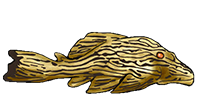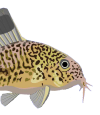Whole genome duplication and transposable element proliferation drive genome expansion in Corydoradinae catfishes.
Proc. R. Soc. B 285:20172732.
http://dx.doi.org/10.1098/rspb.2017.2732
Genome size varies significantly across eukaryotic taxa and the largest changes
are typically driven by macro-mutations such as whole genome duplications
(WGDs) and proliferation of repetitive elements. These two processes may
affect the evolutionary potential of lineages by increasing genetic variation
and changing gene expression. Here, we elucidate the evolutionary history
and mechanisms underpinning genome size variation in a species-rich group
of Neotropical catfishes (Corydoradinae) with extreme variation in genome
size—0.6 to 4.4 pg per haploid cell. First, genome size was quantified in
65 species andmapped onto a novel fossil-calibrated phylogeny. Two evolutionaryshifts
in genome sizewere identified across the tree—the first between 43 and
49 Ma (95% highest posterior density (HPD) 36.2–68.1 Ma) and the second
at approximately 19 Ma (95% HPD 15.3–30.14 Ma). Second, restriction-siteassociated
DNA (RAD) sequencing was used to identify potential WGD
events and quantify transposable element (TE) abundance in different lineages.
Evidence of two lineage-scale WGDs was identified across the phylogeny, the
first event occurring between 54 and 66 Ma (95% HPD 42.56–99.5 Ma) and
the second at 20–30 Ma (95% HPD 15.3–45 Ma) based on haplotype numbers
per contig and between 35 and 44 Ma (95% HPD 30.29–64.51 Ma) and 20–30
Ma (95% HPD 15.3–45 Ma) based on SNP read ratios. TE abundance increased
considerably in parallel with genome size, with a single TE-family (TC1-IS630-
Pogo) showing several increases across the Corydoradinae, with the most
recent at 20–30 Ma (95% HPD 15.3–45 Ma) and an older event at 35–44 Ma
(95% HPD 30.29–64.51 Ma). We identified signals congruent with two WGD
duplication events, as well as an increase in TE abundance across different
lineages, making the Corydoradinae an excellent model system to study the
effects ofWGD and TEs on genome and organismal evolution.




